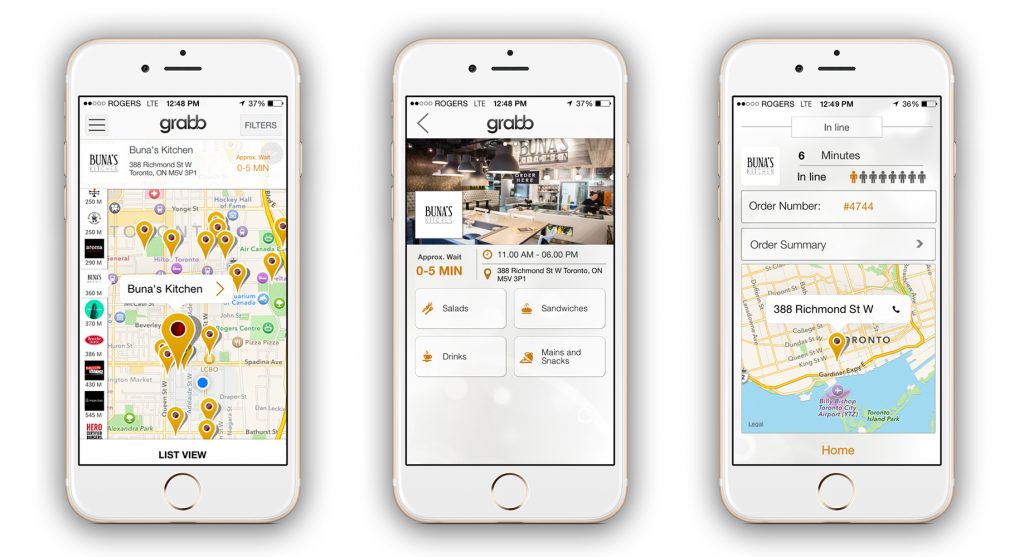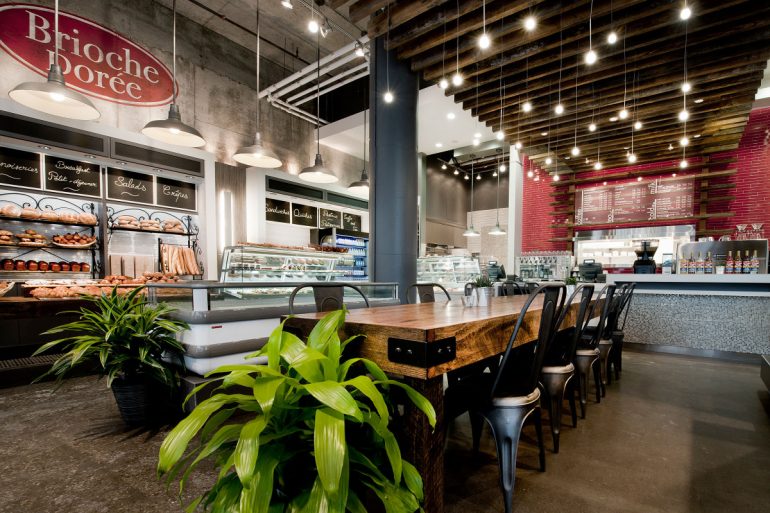They say the average person spends five years of their life waiting in line. I’m not entirely sure who ‘they’ are, but if you’ve ever had to wait in line to order at a restaurant in Toronto, it can sometimes feel like an eternity, especially if you’re hungry.
The idea for Grabb came to life in 2013 while Kabir Daswani was a student at Queen’s University. Grabb allows users to securely pre-order, pre-pay for meals, and “skip-the-line” in just a few taps. Their app – launched last Wednesday – aims to eliminate the average 9-12 minute line-up Torontonians experience at quick-serve restaurants and cafés during peak hours.
“Convenience is the one driving force that’s always been behind my idea for Grabb. When I was at Queen’s University, I used to spend 20 – 30 minutes a day waiting in line for simple drip coffee,” said Daswani. “I saw an opportunity to offer customers a more convenient and efficient way to order, and set out to develop an app to do just that. The bigger idea behind Grabb is being able to offer customers a way to spend less time waiting in lineups and more time doing what they want to do.”
Building an efficient, transparent ordering process has been baked into Grabb’s customer experience. Simply choose the items you want from the menu, pay with your credit card and you’ll be notified when your order has been received. You’ll also see how long the wait is (BetaKit tested the service at the height of lunch hour at Brioche Doree and waited 5 minutes for a sandwich and a salad) and you’ll be notified when your order has been acknowledged. Finally, you’ll get an email receipt with a summary of your purchase.

Grabb generates revenue by charging small transaction fees on both the customer and business side ($0.40-$0.60 and 2.9%, respectively). The reason for the distribution of fees is to ensure that the consumer doesn’t shoulder the entire cost.
Mobile payments is a growing industry in Toronto. The size of the market opportunity has developed to a point where MaRS launched a FinTech hub in February, designed to work with financial services sector and startups to develop the next generation of transactions. A recent report by Accenture stated that, “since 2008, global investment in financial services technology (“FinTech”) ventures has tripled to nearly $3 billion. The dramatic changes underway in financial services, driven by new digital technology, regulations, consumer behavior and the need to reduce costs, mean this trend is set to continue, with global investment on track to grow to up to $8 billion by 2018.”
“The Uber of blank is the trend of apps: bring what they want, when they want it.”
Toronto is a technology hub and the heart of financial services in Canada. According to the TFSA’s (Toronto Financial Services Alliance) 2014 Annual Report (page 18), “The [financial services] sector generates over $50 billion a year for Canada’s GDP and contributes a combined $13 billion in fiscal benefits to all three levels of government.”
“Toronto is well placed to take a leading role in financial technology innovation,” said Adam Nanjee, Head of Financial Technology at MaRS. “With a high concentration of technology startups, a global financial services infrastructure, and collaborative partners in the investment community, FinTech as a sector promises to make a substantial contribution to the Canadian economy.”
Daswani is equally optimistic about the growth of the FinTech industry in Toronto. “Toronto is an exceptional market for all this. We have a great cluster of startups in the area, especially King West. Right now, we’re still at the very early stage, but as you said, those numbers are indicating growth.”
Given the landscape of these apps and what they bring to the table, a common value proposition is making daily activities simpler. “Convenience is the trend here. Everyone is trying to make everyone’s life easier,” said Keely Turner, Head of Growth at Grabb. “The Uber of blank is the trend of apps: bring what they want, when they want it. I think mobile payments and mobile ordering is the next step in that.”
Growth is certainly on the menu at Grabb, with interest coming from establishments in Vancouver and Montreal. “Our plan is to target specific areas in Toronto and then expand across Canada, but we’ve had such positive response from outside that we did set up a client in Montreal and they’ll be going live very shortly. We’ve had 2 restaurants that are set up in Vancouver and they’ll be going live probably in the next month. Our focus is definitely still within Toronto, while accepting a few clients outside [the city].”
Keely explained that not every restaurant can be part of the Grabb network. Each restaurant is vetted for fit, quality of food, popularity and other characteristics. “We like to make sure they have good quality branding so that we can put nice quality images on the app, because that’s the way people are going to discover the food… there’s definitely a strict criteria for the app. We don’t want anyone’s brand to be diminished on the app by just letting anyone in; we want it to only elevate them.”
Popular Grabb partners in Toronto’s core include Market Street Catch, Fresh Off The Boat, Buna’s Kitchen, Hero Burger, Aroma, What A Bagel, Amaya Express and many others. The app is available as a free download for iOS and Android now.


